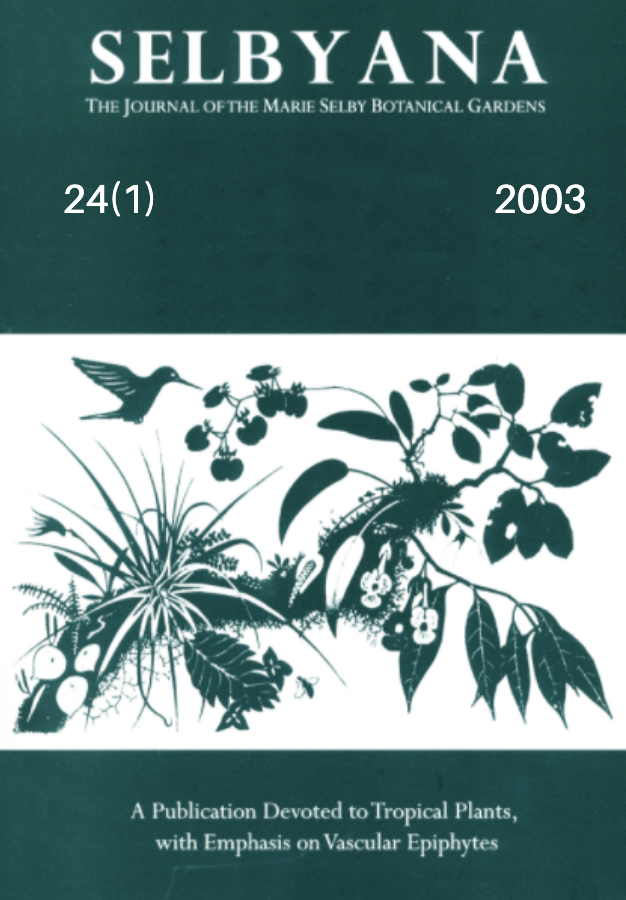Abstract
Tropical montane cloud forests are experiencing climatic change that may alter their sensitive biota and ecosystem processes. We studied the relationship between several environmental factors and the flowering phenology of Werauhia sintenisii, an epiphytic bromeliad from the dwarf montane cloud forest in Puerto Rico, to infer responsiveness of this species to climate and to suggest how useful its phenology may be in monitoring climatic change. We applied a cross-correlation analysis to the number of open flowers per month to eight different environmental variables for 1999-2000. After determining the lag-time at which the environmental factor was best correlated with the number of open flowers, we performed a stepwise regression with the environmental factor shifted by the number of months indicated by the cross-correlation analysis and the number of open flowers per month. Differences were observed between years in the timing of flowering, which began one month earlier in 2000 than in 1999. The production of flowers was related to the monthly mean minimum temperature three months previous and to the monthly mean daily irradiance two months earlier. Together both variables explained 66% of the variation. The flowering of W. sintenisii, which appears to be susceptible to nocturnal temperatures and solar irradiance, may be useful as a biotic indicator of climate change in cloud forests.
Open Access and Copyright Notice
Selbyana is committed to real and immediate open access for academic work. All of Selbyana's articles and reviews are free to access immediately upon publication. There are no author charges (APCs) prior to publication, and no charges for readers to download articles and reviews for their own scholarly use. To facilitate this, Selbyana depends on the financial backing of the Marie Selby Botanical Gardens, the hard work and dedication of its editorial team and advisory board, and the continuing support of its network of peer reviewers and partner institutions.
Authors are free to choose which open license they would like to use for their work. Our default license is the Creative Commons Attribution-NonCommercial 4.0 (CC BY-NC 4.0). While Selbyana’s articles can be copied by anyone for noncommercial purposes if proper credit is given, all materials are published under an open-access license with authors retaining full and permanent ownership of their work. The author grants Selbyana a perpetual, non-exclusive right to publish the work and to include it in other aggregations and indexes to achieve broader impact and visibility.
Authors are responsible for and required to ascertain that they are in possession of image rights for any and all photographs, illustrations, and figures included in their work or to obtain publication or reproduction rights from the rights holders. Contents of the journal will be registered with the Directory of Open Access Journals and similar repositories. Authors are encouraged to store their work elsewhere, for instance in institutional repositories or personal websites, including commercial sites such as academia.edu, to increase circulation (see The Effects of Open Access).
